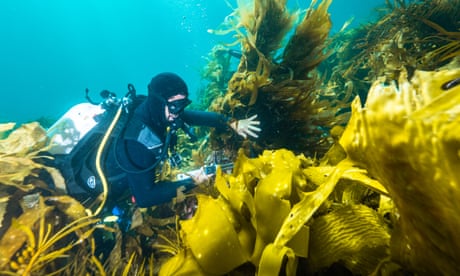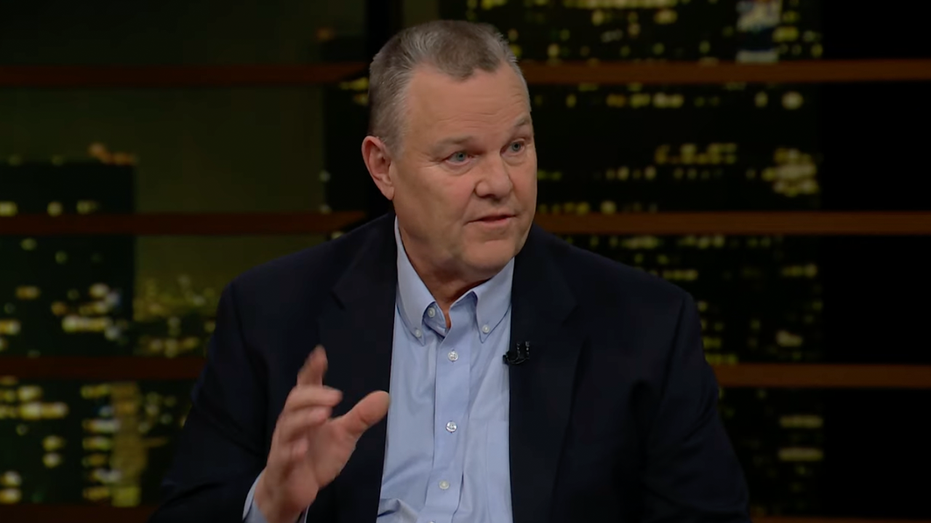- by foxnews
- 09 Mar 2025
‘Really worth a crack’: bringing Tasmania’s giant kelp forests back from the brink
‘Really worth a crack’: bringing Tasmania’s giant kelp forests back from the brink
- by theguardian
- 13 Mar 2022
- in news

The giant kelp forests that flourished along the Tasmanian east coast had all-but vanished before most people realised they were gone.
Scott Ling watched them go. He learned to dive in them at Fortescue Bay, on the Tasman peninsula in the state's south-east, in 1998.
A little more than a decade later they had largely disappeared, victims of a spike in coastal ocean temperatures well above the global average. It brought marine heatwaves and the southward migration of the long-spined sea urchin, a rapacious species that used to be limited to the warmer waters off New South Wales.
The climate-driven loss of more than 95% of the state's giant kelp was listed in a major recent report by the Intergovernmental Panel on Climate Change as an example of cascading impacts across natural systems and society. The Tasmanian global heating hotspot cost not only the kelp forests but the aquatic ecosystem and fishing and diving industries that relied on them.
Like many, Ling remembers times when the kelp at Bicheno, farther north up the state's coast, was "so thick that fishermen would just tie off on the giant kelp, rather than anchor". "Now there is just the odd tree," he says. "The kelp is functionally extinct across most of the east coast."
Ling, an associate professor at the University of Tasmania's Institute of Marine and Antarctic Studies (Imas), is part of a small group taking steps to see if that can be addressed.
Over the past 18 months, he has joined his Imas colleague Dr Scott Bennett and the dive tourism operator Mick Baron in trials seeding giant kelp propagules on a rocky Tasman peninsula reef. On a recent trip with Guardian Australia, they showed off their initial success, the kelp having grown up to 3 metres within six months.
Having proved the concept - that giant kelp can be seeded on twine wrapped around reef boulders, and then can attach itself to the reef proper - they are now aiming bigger. Backed by an initial $300,000 in philanthropic support from the newly created Sea Forest Foundation, a project of climate entrepreneur Sam Elsom, they hope to seed a full half-hectare of lush kelp forest.
Because the kelp grows so rapidly - up to 10 metres in a year - a successful project could lead to a full canopy across an area 100 metres by 50 metres by next summer. Everyone involved acknowledges the project will face challenges, but is ambitious for where it might lead.
"The goal is to try to save the giant kelp forests in Tasmania," Bennett says. "We're at a point if we do nothing they will be lost."
"Hopefully, it is more than just an underwater museum where we can show people what a giant kelp forest used to be like," Ling says. "Hopefully, we can reverse-industrialise Tasmania's east coast."
From the outside, the biggest question facing the enterprise is: what is to stop the newly seeded kelp going the same way as the historic forests?
Long-spined sea urchins remain rampant along the coast. The population is estimated to have tripled since 2016 and has turned many areas into what is known as "urchin barren". Baron, a trained biologist who runs the Eaglehawk Dive Centre, expressed his distress over the loss of the kelp forests two years ago in Guardian Australia's Frontline series, saying parts of the ocean had been turned into "an asphalt driveway".
The scientists will attempt to address this by selecting a kelp forest regrowth site with fewer-than-average urchin and leaning on students and diving enthusiasts to help protect the site by helping collect the predators. They hope the state government will kick in further support, including policies to support reef restoration.
Marine heatwaves also remain a clear threat, and Elsom's support will be key to tackling it. His company, Sea Forest, aims to commercially cultivate Asparagopsis, a seaweed that could significantly reduce greenhouse gas emissions from cattle if mixed with their feed. Last year Sea Forest gave the scientists 250,000 propagules and is backing work at Imas on temperature-tolerant strains that may ultimately increase the chance of survival.
Elsom says Sea Forest and Imas have developed a "great symbiotic relationship", and that all involved had been buoyed by the "amazing results" of the initial trials. "By utilising temperature-tolerant propagules, our aim is to improve the future," he says. "We believe that these ecosystems can then begin to become self-sufficient."
Of the lost kelp forests, Elsom says they have struggled for public attention due to where they are found. "The thing is we don't see them. I feel like if this was a bushfire, and a forest wiped out, everyone would be up in arms," he says.
Both Bennett and Ling see the disappearing kelp forests as part of a bigger idea that has started to gain some traction: the great southern reef. They are backed by the Greens senator Peter Whish-Wilson who has been diving with the Scotts to see their trial and last year made a film about the loss of the kelp forests.
Stretching from Kalbarri on the Western Australian mid-coast to Brisbane, arching around Tasmania, the great southern reef is described as a series of interconnected temperate rocky reefs and seagrass meadows.
Bennett says the marine environment along the south of the continent "has never been appreciated for what it really is". "It rivals the Great Barrier Reef on pretty much any metric you look at," he says.
Whish-Wilson says the southern reef network contributes more than $10bn to Australia's economy each year, and 70% of Australians live within 50km of it, but receives a fraction of the attention and funding it needs to withstand pressure from global heating, invasive species and industry. On Friday, he released the country's first great southern reef policy, calling for a $20m giant kelp recovery plan, $40m for an invasive marine species unit within CSIRO to better deal with invasive urchins, and the appointment of a great southern reef envoy to perform a similar role to that played for the Great Barrier Reef by Coalition MP Warren Entsch.
The Greens want golden kelp, which dominates mainland reefs and is also a victim of heatwaves and urchins, to be listed as a threatened ecological community, and giant kelp to finally receive a full recovery plan a decade after it was listed as in trouble.
"The Great Barrier Reef understandably gets billions of federal funding, but it's great southern sister literally gets a few million dollars to deal with equally serious challenges," Whish-Wilson says. "No matter what the outcome at the upcoming election, we are ready to work with the next federal government to take a holistic and integrated approach to promoting, funding and managing it."
Ling believes the project to try to restore the giant kelp forests of Tasmania could prove a call to arms. "I think people are over eco-grief and want to get in there and make a difference. The great thing about giant kelp is they can do that very quickly. We have a chance to rebuild an ecosystem and ultimately make this self-sustaining," he says.
"We need to be thinking globally and be reducing emissions but there are a whole lot of things we can be doing by acting locally. We're not going to just sit on our hands and let this go. I really think this is worth a crack."
- by foxnews
- descember 09, 2016
'Speaker scum' on flights sparks debate among travelers: 'This is getting out of hand'
A traveler asked social media users to weigh in on flyers who play audio aloud on their devices and don't use headphones.
read more


